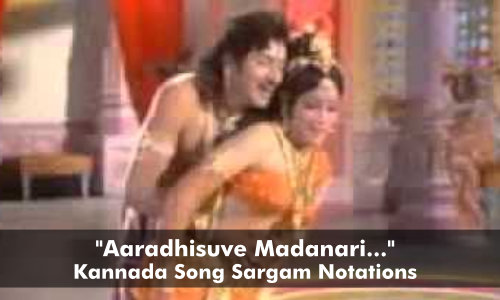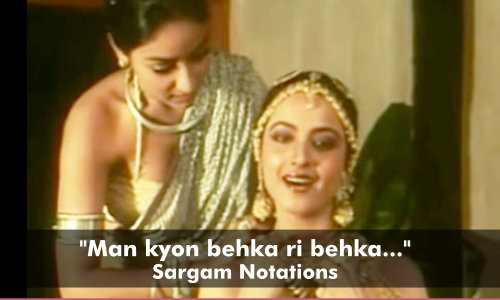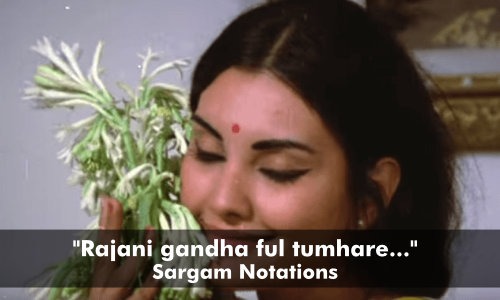Singer : Kishore Kumar
Lyricist : Anand Bakshi
Music Director : R D Burman
Movie : Kati Patang (1970)
Flute used for Sargam : G#
Though, this song can be started with shuddh Rishabh, but the problem with that would arise while playing the interlude music parts. So, it is easier and better to begin this song at low Pancham.
I have tried to jot down the Sargam for all the 3 Interludes, which make this song interesting even as all 3 Antaras are in same tune.
Pay attention to play Tivr Ma in the last lines of the Antaras where indicated as M#. Also, play Komal Ni for the Guitar part in the 3rd interlude.
Here it goes…
PRELUDE:
Whistling:
,PS.. | R S | ,D,P
,PS | S R | SRG…
Humming:
GP… | PDP | M PM {PMG}
Whistling:
GMG R… | PP GRS
STHAYI:
Ye | shaam | mastaani
,P | S… | R S ,D ,P
madahosh | kiye | jaae
,P,P S… | SR | SRG…
Mujhe | dor | koi | khinche,
G G | GP… | PD P | MP M…
teri | or | liye | jaae
PMG | G(M)G R… | PP | GRS…
Ye sham mastani…
,P | S… | R S ,D ,P
INTERLUDE:
Guitar:
,P S~,PD (x2)
Yoodling:
,P GS G S | ,PGS GS ,P,D (x2)
,P RS R G S…
Violins:
G M P
ANTARA 1:
Dur | rahati | hai | tu,
(P)D… | M P | D | P…
mere | paas | ati | nahin
S S | D… | M P | D P…
Hothhon | pe | tere,
S D… | M P | D P…
kabhi | pyaas | ati | nahin
S S | D(n)D | M P | D P…
Aisa | lage | jaise | ke | tu,
N D | P PM | D P | M | G~R
hnske | zahar | koi | piye | jaae | Ye
R R | R M# | M#P | MM | GP | P
sham | mastani…
S… | R S ,D ,P…
INTERLUDE:
Violins:
GRS ,P ,D G R S (x2)
RSN ,P ,D M G R (x2)
G RG M GM P MP D PDN…
SNDP D… RM… d… P
G R S
ANTARA 2:
(Sargam, same as for Antara 1)
Baat jab main karun,
mujhe rok deti hai kyon
Teri mithhi najar,
mujhe tok deti hai kyon
Teri haya, teri sharm,
teri kasam mere honthh siye jaae
Ye sham mastani…
INTERLUDE:
Accordion:
,PS ,D | ,DS ,N | ,NS ,N | ,NS ,D (x2)
Saxophone:
,PG ,P,D | ,DG,P | ,DG S,P
,PG ,P,D | ,DG,P | ,DG S,P
,PG,P | ,D S G M.. D R M G
Guitar:
n n PnD PMGR
SSS RRR DP
Accordion:
,P,D,P
ANTARA 3:
(Sargam, same as for Antara 1)
Ek ruthhi hui,
takadir jaise koi
Khaamosh aise hai tu,
taswir jaise koi
Teri najar banake jubaan
lekin tere paigaam die jaae






